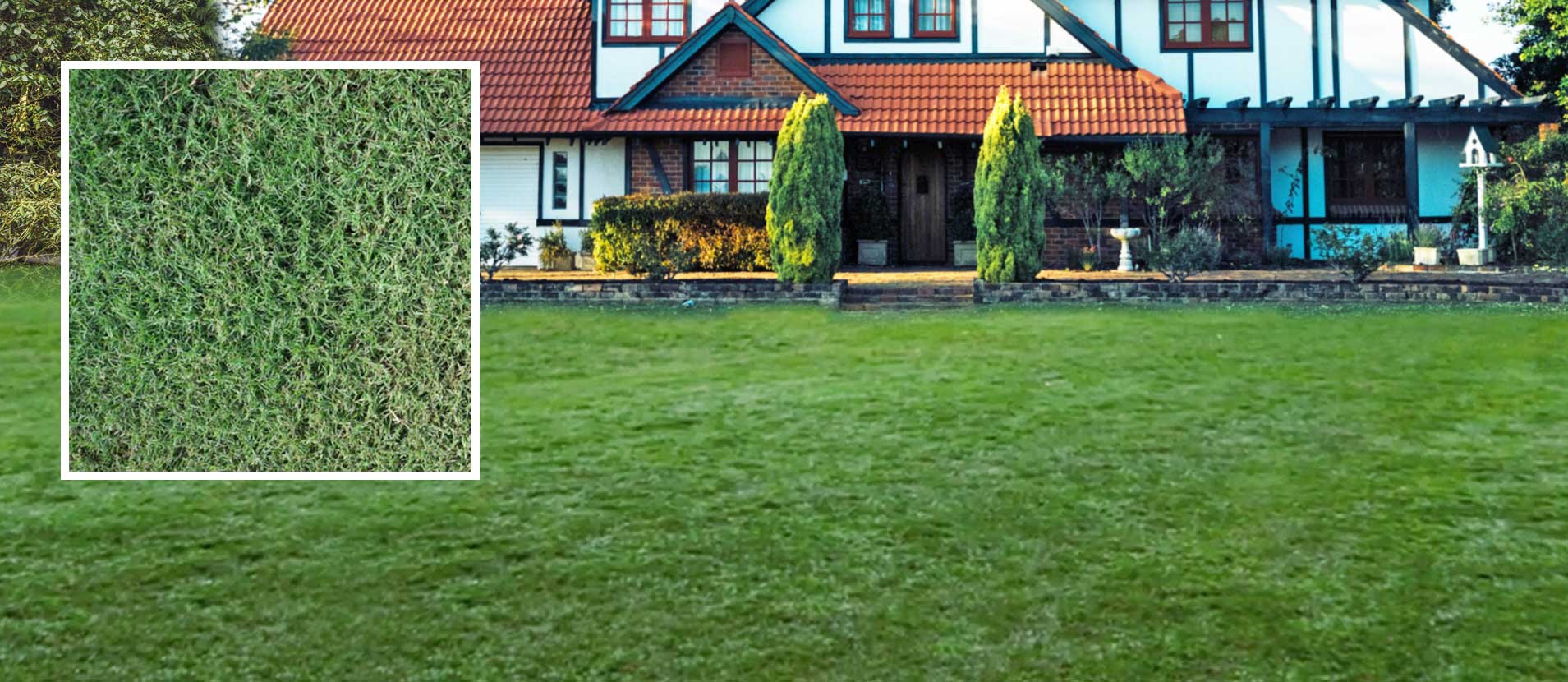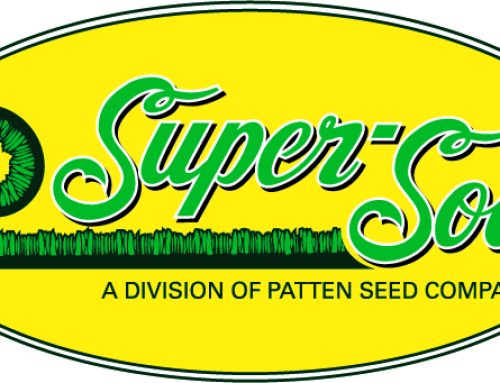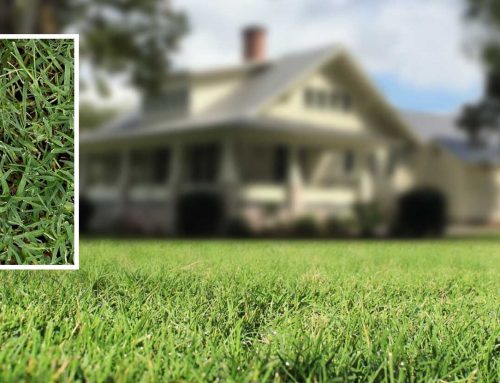With a nearly 60-year history behind it, Tifway 419 Bermuda is a turf grass you can depend on. It provides a beautiful, deep grayish green carpet made of fine leaf blades, but it’s more than a pretty face. Tifway 419 is as tough as it is beautiful. As the most popular hybrid Bermuda turf in the South for golf and sports field use, it’s proven it can take a beating and recover rapidly from the abuse. When it’s been fully established, Tifway 419 has excellent drought and heat tolerance; a necessity for summers in Texas. It does prefer full sun and has little shade-tolerance. It’s particularly happy in USDA zones 7 to 11. With North Texas in the 7b to 8a range, you can be assured it will perform well in the summer heat. You can also ex-pect it to stay green longer than many Bermudas. With a good frost tolerance, it turns green earlier in the Spring and goes dormant later in the Fall/Winter. To see if Tifway 419 Bermuda turf grass is what you are looking for in a lawn, keep reading for more detailed information on what it takes to keep this turf at its peak performance.
A BRIEF HISTORY:
The University of Georgia’s Coastal Plain Experiment Station in Tifton, Georgia is renowned for their turf grass development with Dr. Glenn Burton as the brains for most of that time. Hybrid Bermuda grasses were first developed by Burton in the late 1930s/early 1940s as a “nutritious grass for cattle”. His first hybrid, called “Coastal Bermuda”, doubled forage production in the South even covering more than 10 million acres of Southern pasture land at one time. With this success, he made a name for himself.
In 1946, the Director of the U.S. Golf Association Green Section approached Burton and asked if he would start research studies to breed better turf grass for use in hot climates. They would provide $500 a year for the studies. He jumped at the challenge. Before the early 1950s when Burton’s hybrid Bermudas started to take hold, many Southern golfers were putting on less than ideal conditions. Greens were made of green-colored sand. Fairways were centipedegrass and rough bermuda grass that went dormant early. Burton was successful and continued to search for even better turf. In 1960 Tifway 419, his fourth improved hybrid Bermuda turf grass, was released to the market and it has remained widely used for sports, commercial applications and lawns for nearly 60 years.
TRAFFIC TOLERANCE:
Tifway 419 is considered a vigorous grower and establishes itself quickly from sod. This rapidly spreading, dense growth habit allows it to recover quickly from injury. This density provides a great impact-absorbing cushion especially when cut to between 1/2 and 1-1/2 inches. It also provides a good barrier to weeds. Plus, Tifway 419 has been found to retain its resilience even in dormancy. It may become dormant after repeated winter frosts in North Texas, but will recover quickly with warming temperatures.
MOWING:
Tifway 419 does require mowing every four or five days during June, July and August due to its vigorous growth habits. Only the top third of the blades are green. You want to avoid cutting more than a third of the length at a time or you will be left with a brown lawn. Though it will recover, this is very stressful to the turf and could cause long term damage if done repeatedly. It is recommended that before the lawn greens in the Spring, you mow it a bit shorter than normal to remove dead leaf blades and debris that could shade new growth. It will also allow more sun to reach the soil, warming it earlier to spark the initial greening. Once your lawn is fully green, you can mow it to your preferred height. Grasscycling, leaving your clippings on the lawn, is perfectly acceptable and the decomposition of those clippings can provide up to 25 percent of the lawn’s fertilizer needs. If necessary, remove thatch every two to three years through core aerification.
WATERING:
Watering should be done in the early to late morning. Night time watering could lead to fungal development. Tifway 419 is well adapted to ‘gray’ water sources. Optimally, you should provide 1 to 1-1/4 inches of water per week during summer to retain color, but it can subsist on 1/2 inch per week depending on soil conditions. It will also survive several weeks without irrigation, but it may not look pretty.
FERTILIZING AND WEED CONTROL:
For peak performance you do need to fertilize Tifway 419 and it’s helpful to provide some weed control. Optimum conditions include soil with a pH between 5.5 to 7.0, phosphorous levels of 100 pounds/acre and potassium at 150 to 200 pounds/acre. Applying 1 pound/1000 sq. ft. of nitrogen per month will provide healthy plant growth. Here is a suggested treatment regimen for your lawn.
Spring:
When grass begins to green in Spring, early to mid February, apply a turf-grade high-nitrogen fertilizer; 20-4-10, preferably with a weed preventer. Use a rotary-type spreader to broadcast following spreading rates recommended on the bag. Apply post-emergent herbicides only when weeds are present and wait three weeks after the lawn is green before doing so. Spot treating is recommended.
Summer:
Apply a complete nitrogen-phosphorus-potassium (N-P-K) turf-grade fertilizer such as 28-4-6 or similar in mid-Summer. Use a rotary-type spread-er to broadcast following spreading rates recommended on the bag.
Fall:
Early to mid-Fall apply a turf-grade Fall Feed/Winterizer, like a 5-5-20, preferably with a weed preventer. Use a rotary-type spreader to broadcast following spreading rates recommended on the bag.
Note: In the first year after planting, you shouldn’t use any kind of herbicide. It could stunt the growth of your new grass slowing its ability to root.
PURCHASE:
Tri-Tex Grass provides Tifway 419 for purchase by the pallet in squares or pallet in rolls and also as individual squares. You are welcome to contact us at 940-686-2700 with any questions.
Tri-Tex Grass has called Granbury home since 2004. We provide and install high-quality Bermuda grass, St. Augustine grass, zoysia grasses and buf-falo grass from our grass farms in Tioga, Pilot Point, Brazos Point and Bryan, Texas. We serve Dallas, Ft. Worth, Granbury and surrounding areas.





